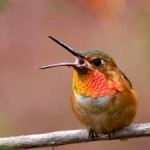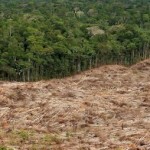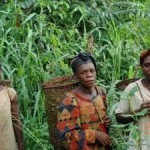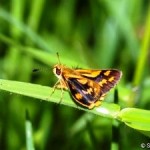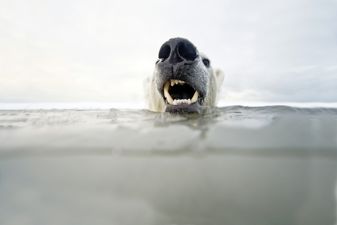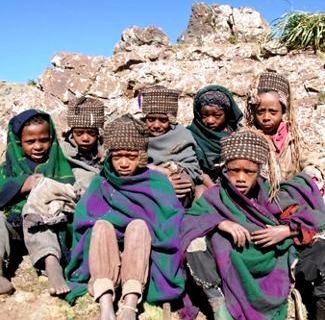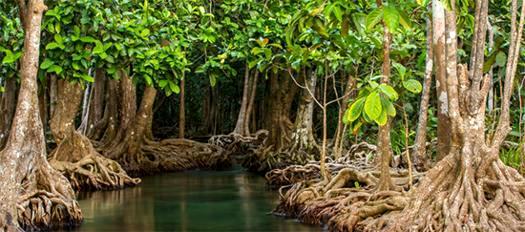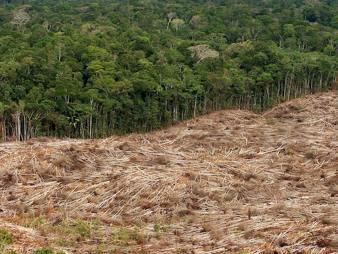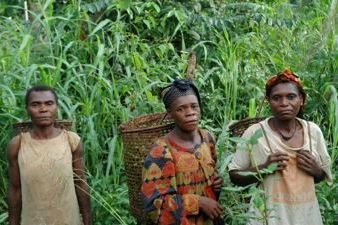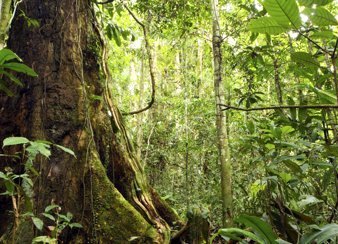 A reindeer herd which was once the largest in the world has shrunk to a fraction of its former size, official surveys have revealed.
A reindeer herd which was once the largest in the world has shrunk to a fraction of its former size, official surveys have revealed.
Canada’s George River Migratory Reindeer Herd once numbered 8-900,000, but a recent government survey found only 27,600 animals survive.
The survey was published by Ministère des Ressources naturelles et de la Faune (MRNF), Quebec, and was carried out in July 2012 in partnership with the Newfoundland and Labrador Government‘s Department of Environment and Conservation, the Institute for Environmental Monitoring and Research and the Torngat Wildlife, Plants and Fisheries Secretariat. In October 2010, the herd’s total population was estimated at roughly 74,000 animals, and the recent survey confirms an ongoing decline of the George River migratory caribou herd population over the past few years.
The herd’s unprecedented and dramatic decline has left local indigenous people fearful for its survival. The Innu live as nomadic hunters, hunting animals like bear, beaver and porcupine, and also fish and gather berries, but most of all, they rely on the herds of caribou (reindeer) which migrate through their land every spring and autumn.
A ‘tsunami of factors’ has been blamed for the decline of reindeer, which government ministers have called ‘significant and frightening’.
The reindeer, known as caribou in North America, is central to the lives and culture of many indigenous peoples in the sub-Arctic. The 63% population drop just in the last two years has left many of them shocked.
Speaking to Survival International, George Rich, an elder from northeast Canada’s Innu people, said, “One of the major factors is continued mining and mineral exploration.”
“For example, Quest Minerals has recently announced that it wants to build a road through the heart of the calving grounds, as well as flying helicopters and planes back and forth from exploration sites.”
 Canada’s promotion of industrial projects on Innu land has destroyed large tracts of the reindeer’s grazing grounds, heavily disrupting migratory routes. The long history of mining in this area by Cap-Ex Ventures has already taken a huge toll on the rich hunting grounds, and many of the rivers have been dammed for hydro-power. A railway was also built into the region in the 1950s to transport the ore.
Canada’s promotion of industrial projects on Innu land has destroyed large tracts of the reindeer’s grazing grounds, heavily disrupting migratory routes. The long history of mining in this area by Cap-Ex Ventures has already taken a huge toll on the rich hunting grounds, and many of the rivers have been dammed for hydro-power. A railway was also built into the region in the 1950s to transport the ore.
The herd’s decline has led some biologists to blame indigenous hunting practices. However the Innu, who have co-existed with the caribou for thousands of years, have been quick to defend themselves.
Rich said, “The government always blames the Aboriginal people, but we are deeply connected to the caribou and have lived with them for generations.”
Many Innu are calling for greater control over their territories and resources, and to be treated as equals in decisions that affect their lands and the animals that live there.
Stephen Corry, Survival International’s Director said on December 3, “It’s easy to blame indigenous peoples for over-hunting because they’ve usually no voice to defend themselves from these accusations. Yet it’s been proven in countless studies that they are the world’s best conservationists. When will governments and scientists realize this? We need to start listening to what indigenous peoples have to say about matters on their own land: they know best.”
Source: Survival International.


